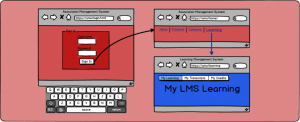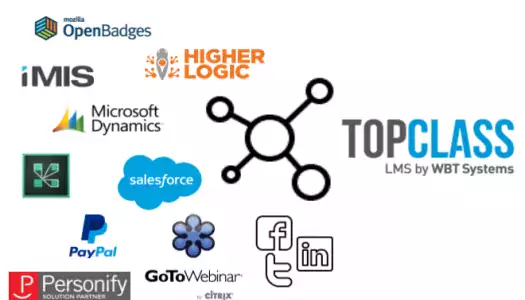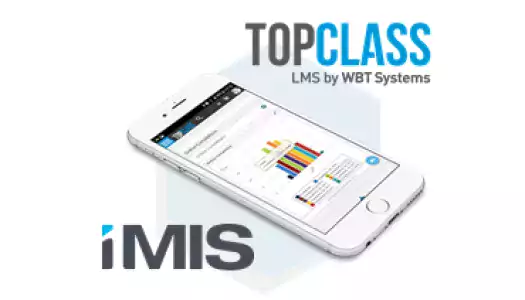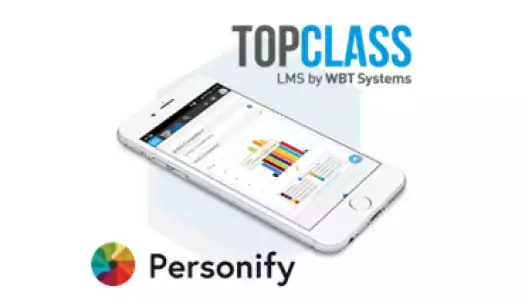Back in June, Jeff Cobb of Tagoras published a great article on integrating your AMS with an LMS. If you are one of the many organizations that uses an AMS to manage your association’s business, and you are searching for the best LMS to integrate it with, we think that you should pay attention to what Jeff had to say.
We certainly have!
Jeff mentioned a couple of key things that you need to consider, the first being - Why? His key message is that the AMS is your system of record, and you want a good LMS to be another spoke in your solution hub, to manage the learning and compliance aspects of your business. As part of this, we think it is very important that you plan your Data Transfer Strategy.
A clear data transfer strategy
- Have a clear vision of your business requirements for integrating the systems. Don’t just do it because you think you need to. Have a very clear vision of what the LMS will bring to the table in your overall technology topography. The LMS can have a very important role in providing education and compliance management options, but it can also be an extended revenue stream with selling of courses, or conferences. However some of this you may already be doing with your AMS. So be sure what you need the LMS for.
- Decide early what parts of each system will be used. For example, most good Learning Management Systems will have their own e-Commerce module, but your AMS will also. So you want to decide early, which of your systems will be the controller for your e-Commerce solution as this will be key in deciding what data is necessary to transfer between the application.
- Identify your “System of Record” for each data set. One of the two applications must be the “master” when it comes to data. Trying to have both systems control user records for example, is just as recipe for confusion and data inconsistency. While it might seem counter-intuitive to say this, WBT recommend that the AMS be the “master” system for your users, groups, products as it is almost certainly going to be controlling your Web Site or Portal so having the LMS as the “master” will likely create an overly complicated workflow. On the other side, the LMS will be the master data set for continuing education credits (users claim/record/are awarded credits in the LMS, and then this is written back to the AMS; as credits are “education” related and the LMS is the system for the Education department).
You may have seen that recently we blogged about our two-way bridge with iMIS, one of the more popular Association Management Systems.
Key points to consider about your integration
There are many key things you need to consider about your integration, but the most important are:
- SSO – Single Sign On and Shared Branding
- Good Technology Components
- Experienced Technology Partners
SSO – Single Sign On and Shared Branding
Users will not want to log into two separate systems. You cannot provide a “holistic” solution for your association members if the two systems are not integrated behind one “Sign-in”. We all know how frustrating it is having to remember multiple passwords, so don’t make life more complicated for the people you are trying to help!
Make sure that your AMS and chosen LMS can have a seamless SSO workflow.

By shared branding, we mean both in terms of look & feel and the internet domain i.e. it needs to be transparent to the user that they are redirected to another domain for a cloud-hosted LMS; this is all very important to ensure the user trusts the system and have a seamless user experience. We have a specific example of how we managed this with the two way iMIS bridge, which has been setup by NiUG, the National iMIS Users Group.
Good Technology Components
The Integration between any systems should be built with robust, industry standard components. Also, you want the integration points to be part of the core application components of each system so that upgrades can be managed seamlessly.
Technology standards like Web Services APIs can be key in helping data transfers to be smooth, but don’t necessarily get caught up in the specifics of the mechanisms for integration. As long as the two systems can be integrated in a robust way, and the AMS and LMS vendors know what they are doing, this is the main thing.
Experienced Technology Partners
In his post, Jeff Cobb makes the following points on this aspect of your decision:
-
- Do the vendors seem well prepared for integration?
- Have the two systems or companies integrated before?
- Are there internal issues that will interfere with integration?
Working with an experienced technology partner may seem obvious but it is always worth stressing. Having the experience of having done it before, is a huge benefit when it comes to building good integrations. It is always worth checking the pedigree of your technology partners in this aspect.
Interested in exploring this subject some more?
If you are looking for a technology partner to bring an LMS into your association’s technology Hub, and link in with your AMS, then please feel free to contact us here at WBT and we would be more than happy to help.






